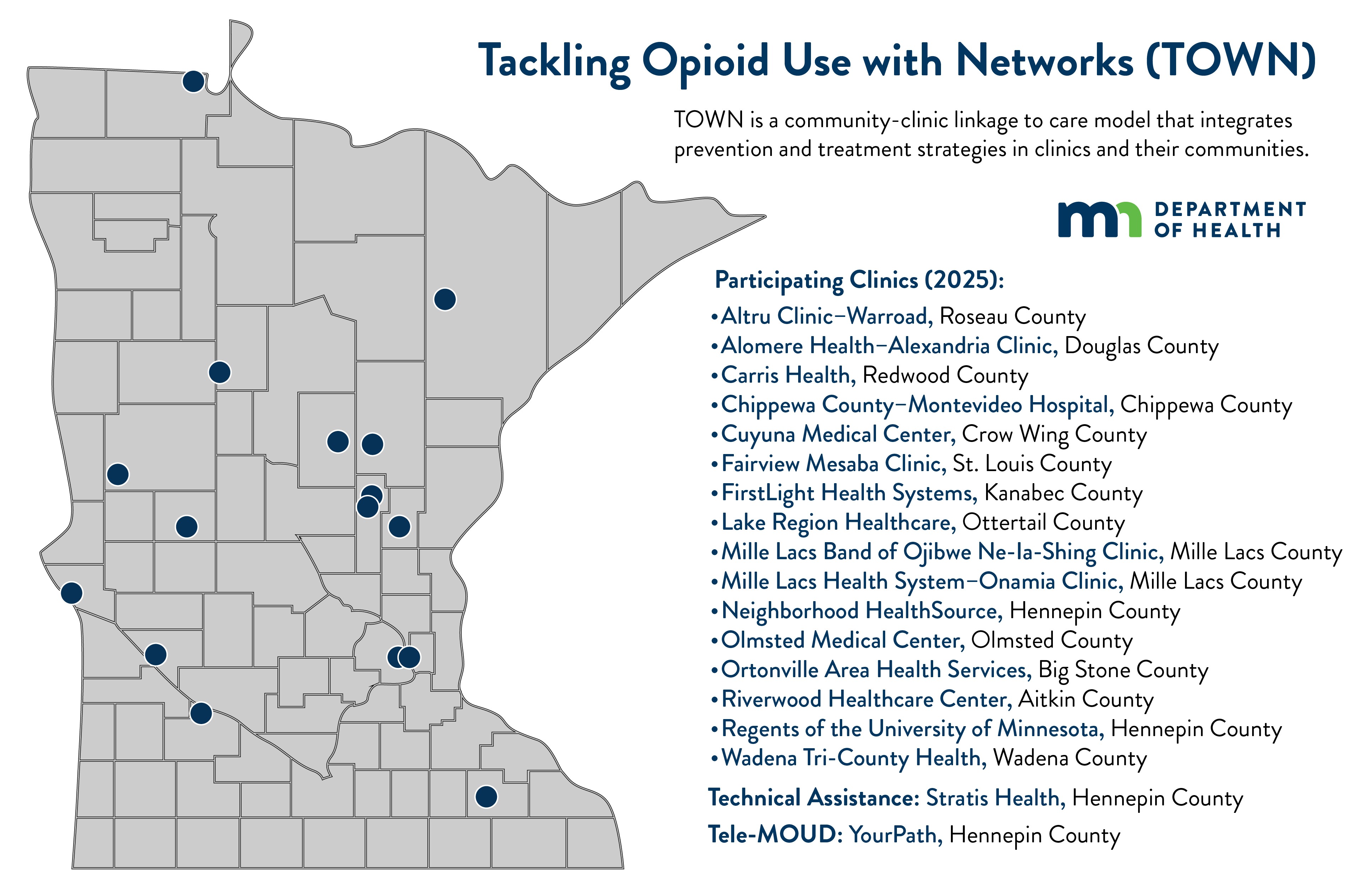Drug Overdose Prevention
Related Topics
Contact Info
Injury and Violence Prevention Section
Tackling Overdose with Networks (TOWN)
Tackling Overdose with Networks (TOWN) is a clinic-based model promoting an approach that includes multiple strategies to reduce opioid overdose within communities by:
- Increasing access to Medication for Opioid Use Disorder (MOUD) also known as Medication-Assisted Treatment (MAT).
- Increasing community care coordination and prevention efforts.
TOWN Program Strategies
- Designating a care coordinator/navigator to manage the relationship between the health care system and patients.
- Appointing a provider champion to strengthen capacity, expand access within the clinic and neighboring clinics and support long-term sustainability.
- Delivering continuous technical guidance and support to medical providers considering prescribing medication for opioid use disorder (MOUD).
- Provide short term, low threshold telehealth access for MOUD bridging and comprehensive assessments to patients.
- Creating opportunities to partner with established community task forces that bring together behavioral health professionals, law enforcement, EMS, public health agencies, and a range of non-profit and for-profit organizations.
- Support Naloxone distribution within the clinic and the community.
- Integrate the Prescription Monitoring Program into clinical workflows.
- Implement multidisciplinary care teams focused on the management of controlled substances.
TOWN Participating Clinics

| Clinic | County |
| Altru Clinic- Warroad | Roseau |
| Alomere Health-Alexandria Clinic | Douglas |
| Carris Health | Redwood |
| Chippewa County – Montevideo Hospital (CCMH) | Chippewa |
| Cuyuna Medical Center | Crow Wing |
| Fairview Mesaba Clinic | St. Louis |
| FirstLight Health System/Welia- Mora | Kanabec |
| Lake Region Healthcare | Ottertail |
| Mille Lacs Band of Ojibwe Ne-Ia-Shing Clinic | Mille Lacs |
| Mille Lacs Health System – Onamia Clinic | Mille Lacs |
| Neighborhood HealthSource | Hennepin |
| Olmsted Medical Center | Olmsted |
| Ortonville Area Health Services | Big Stone |
| Riverwood Healthcare Center | Aitkin |
| Regents of the University of Minnesota | Hennepin |
| Wadena Tri-County Health | Wadena |
| Technical Assistance - Stratis Health | Hennepin |
| Tele-MOUD - YourPath | Hennepin |
TOWN Program Resources
- TOWN Implementation Overview (PDF)
- TOWN Evaluation Summary- Model Implementation and Best Practices (PDF)
- TOWN Evaluation Emergent Outcomes (PDF)
- TOWN Manual (PDF)
Contact health.drugodprev@state.mn.us for further information on TOWN.
Last Updated: 05/13/2025